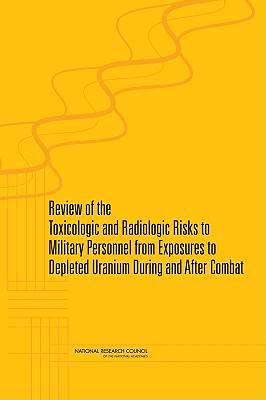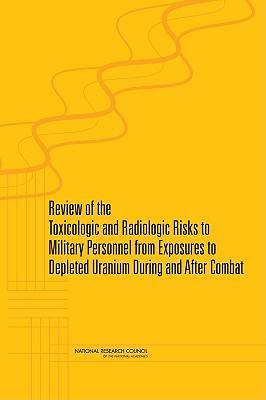
- Afhalen na 1 uur in een winkel met voorraad
- Gratis thuislevering in België vanaf € 30
- Ruim aanbod met 7 miljoen producten
- Afhalen na 1 uur in een winkel met voorraad
- Gratis thuislevering in België vanaf € 30
- Ruim aanbod met 7 miljoen producten
Zoeken
Review of the Toxicologic and Radiologic Risks to Military Personnel from Exposures to Depleted Uranium During and After Combat
National Research Council, Division on Earth and Life Studies, Board on Environmental Studies and Toxicology, Committee on Toxicology, Committee on Toxicologic and Radiologic Effects from Exposure to
Paperback | Engels
€ 62,95
+ 125 punten
Omschrijving
Since the 1980s, the U.S. military has used depleted uranium in munitions and in protective armor on tanks. Depleted uranium is a toxic heavy metal and is weakly radioactive. Concerns have been raised about the adverse health effects from exposure to depleted uranium that is aerosolized during combat. Some think it may be responsible for illnesses in exposed veterans and civilians. These concerns led the Army to commission a book, Depleted Uranium Aerosol Doses and Risks: Summary of U.S. Assessments, referred to as the Capstone Report that evaluates the health risks associated with depleted uranium exposure. This National Research Council book reviews the toxicologic, radiologic, epidemiologic, and toxicokinetic data on depleted uranium, and assesses the Army's estimates of health risks to personnel exposed during and after combat. The book recommends that the Army re-evaluate the basis for some of its predictions about health outcomes at low levels of exposure, but, overall, the Capstone Report was judged to provide a reasonable characterization of the exposure and risks from depleted uranium.
Specificaties
Betrokkenen
- Auteur(s):
- Uitgeverij:
Inhoud
- Aantal bladzijden:
- 172
- Taal:
- Engels
Eigenschappen
- Productcode (EAN):
- 9780309110365
- Verschijningsdatum:
- 6/06/2008
- Uitvoering:
- Paperback
- Formaat:
- Trade paperback (VS)
- Afmetingen:
- 152 mm x 226 mm
- Gewicht:
- 294 g

Alleen bij Standaard Boekhandel
+ 125 punten op je klantenkaart van Standaard Boekhandel
Beoordelingen
We publiceren alleen reviews die voldoen aan de voorwaarden voor reviews. Bekijk onze voorwaarden voor reviews.











